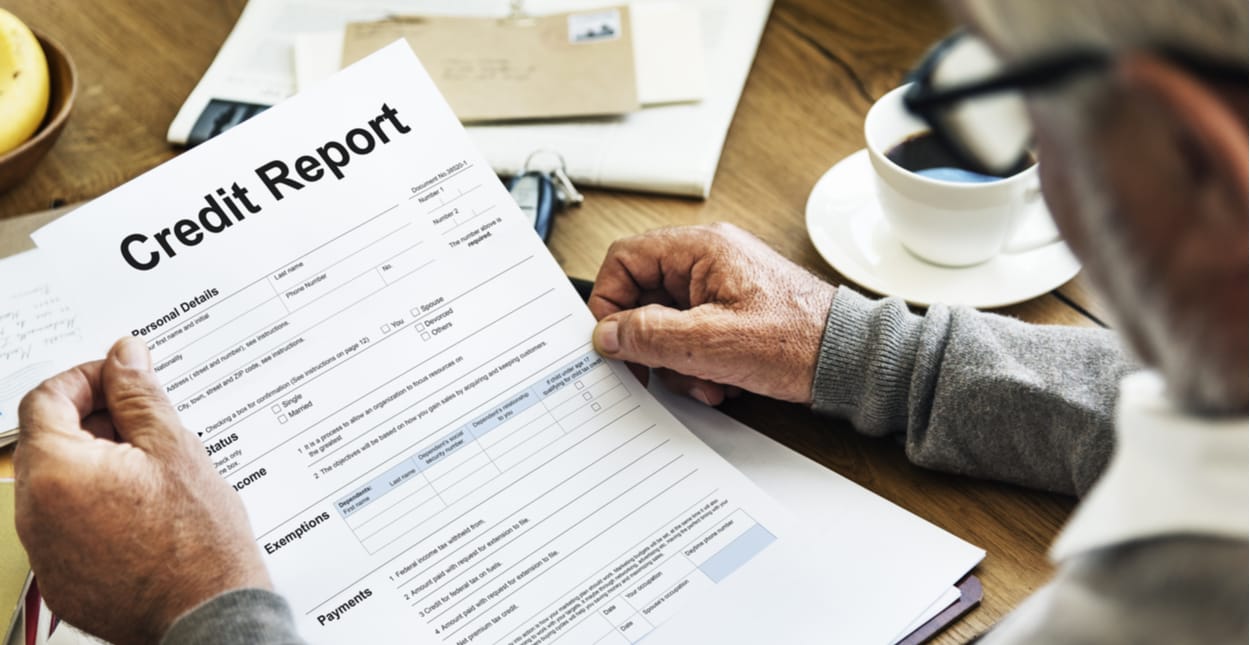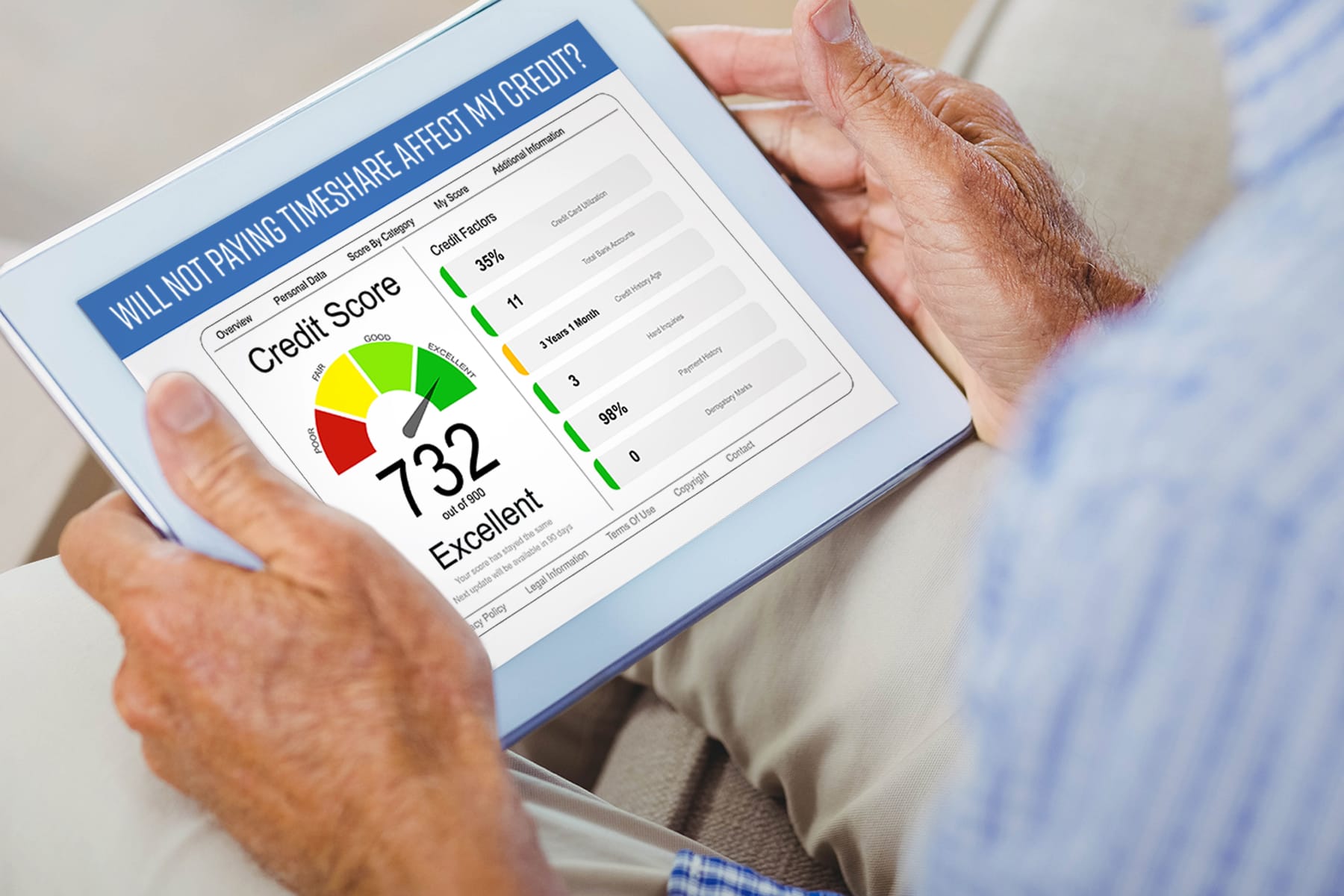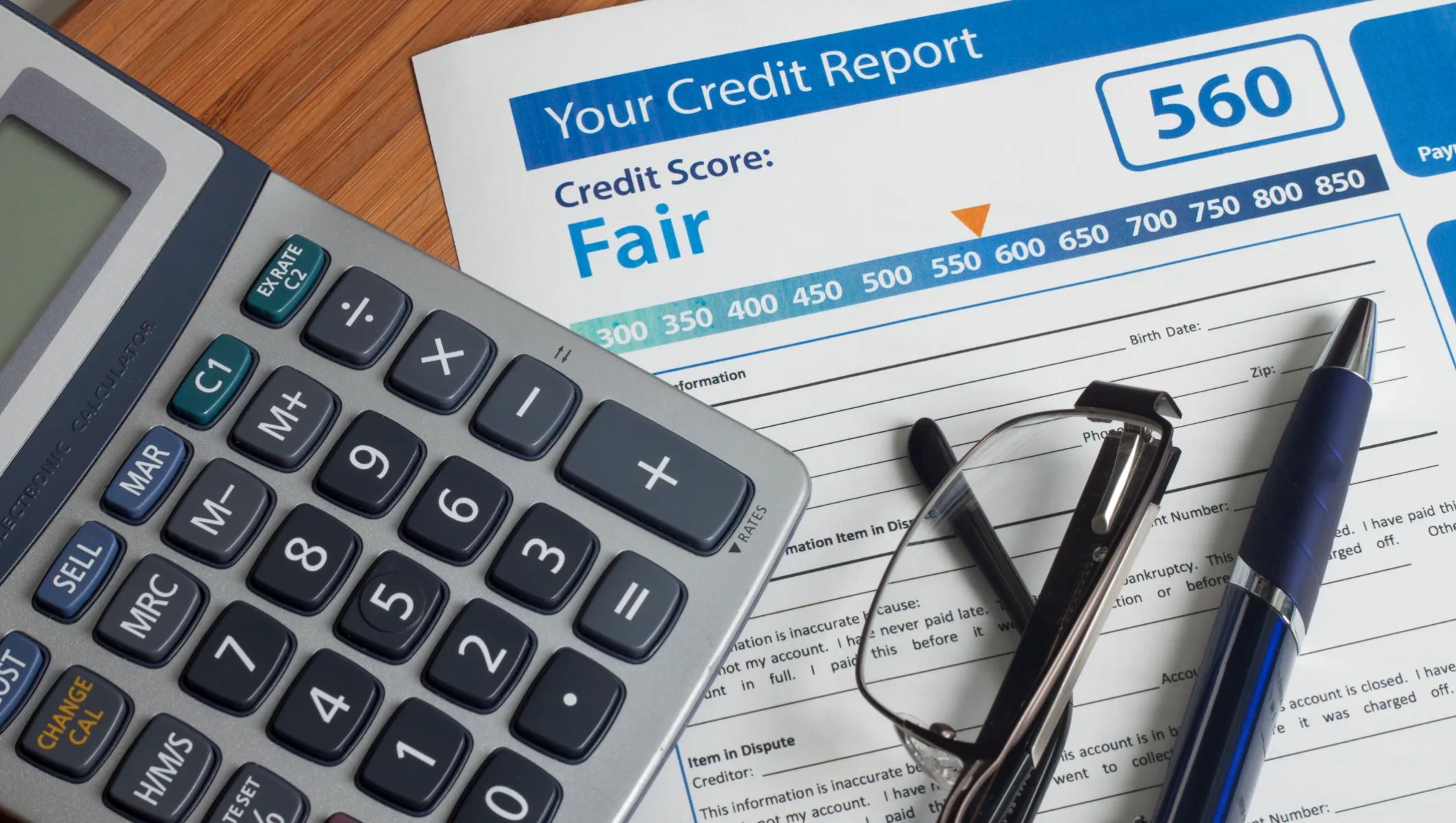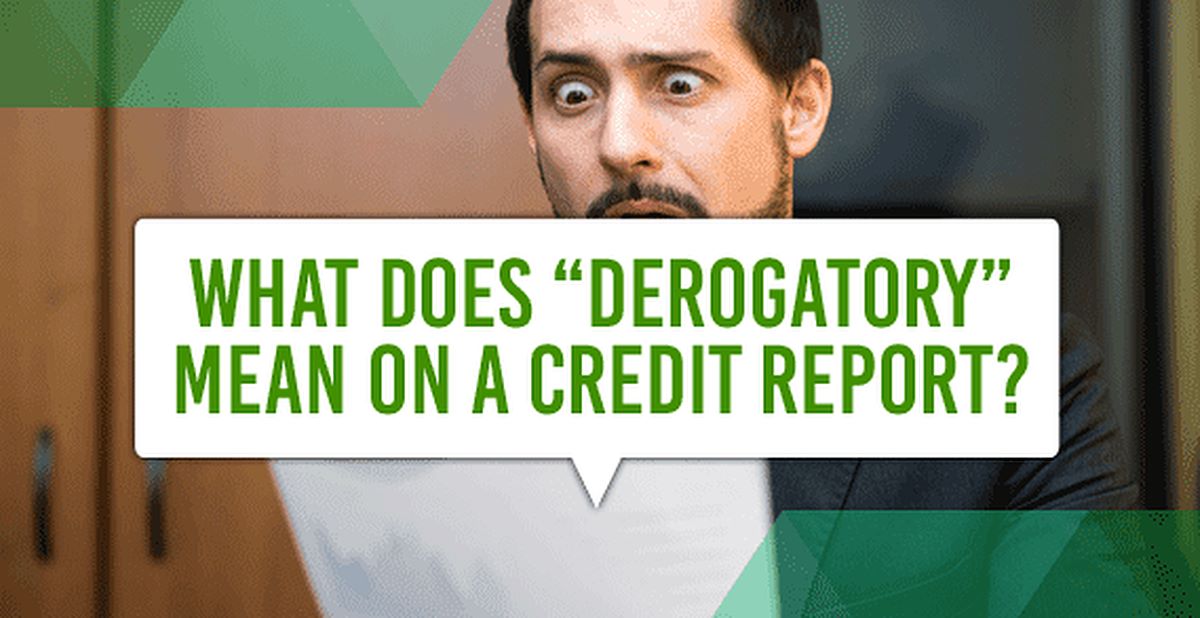Home>Finance>How To Get Charge Off Removed From Credit Report


Finance
How To Get Charge Off Removed From Credit Report
Published: October 20, 2023
Learn how to remove charge offs from your credit report and improve your financial standing. Take control of your finances with our expert finance tips.
(Many of the links in this article redirect to a specific reviewed product. Your purchase of these products through affiliate links helps to generate commission for LiveWell, at no extra cost. Learn more)
Table of Contents
- Introduction
- Understanding Charge Offs
- Impact of Charge Offs on Credit Reports
- Steps to Get Charge Off Removed from Credit Report
- Step 1: Review Your Credit Report
- Step 2: Validate the Charge Off
- Step 3: Negotiate with the Creditor
- Step 4: Settle the Debt
- Step 5: Request for a Goodwill Adjustment
- Step 6: Dispute the Charge Off
- Step 7: Seek Professional Help if Needed
- Conclusion
Introduction
Having a charge off on your credit report can be a significant hurdle when it comes to accessing credit and achieving financial goals. A charge off occurs when a lender writes off a debt as uncollectible and reports it as a loss. This negative information can stay on your credit report for up to seven years, making it crucial to remove charge offs in order to improve your creditworthiness.
In this article, we will guide you through the process of getting a charge off removed from your credit report. We will outline the steps you need to take, from reviewing your credit report to negotiating with creditors. Understanding and navigating this process may seem overwhelming at first, but by following our recommendations, you can increase your chances of success.
It is important to note that removing a charge off from your credit report is not guaranteed. Each case is unique and success depends on various factors like the age of the charge off, the creditor’s willingness to negotiate, and your overall payment history. However, by taking appropriate action, you can significantly improve your credit score and financial standing.
Before we dive into the steps to remove a charge off, let’s first gain a better understanding of what charge offs are and their impact on credit reports.
Understanding Charge Offs
A charge off is a term used by lenders to classify a debt as unlikely to be paid off. It typically occurs when a borrower fails to make minimum payments for a specified period of time, usually six months. The lender then writes off the debt as a loss and may sell it to a collection agency or attempt to collect on it through internal means.
When a charge off is reported on your credit report, it is a red flag to potential lenders, indicating that you have not fulfilled your financial obligations. This negative mark can significantly impact your credit score and make it difficult to obtain new credit or loans. It can also lead to higher interest rates and fees, reducing your overall financial flexibility.
It’s important to note that even after a charge off, you are still legally responsible for the debt. The charge off is simply an accounting measure taken by the lender to reflect the unlikelihood of future repayment. Therefore, it’s in your best interest to take action to resolve the charge off and improve your creditworthiness.
Now that we have a basic understanding of charge offs, let’s explore the impact they can have on your credit report.
Impact of Charge Offs on Credit Reports
Charge offs can have a significant negative impact on your credit reports and credit scores. They are considered as one of the most damaging entries that can appear on your credit history. Here are some ways in which charge offs can affect your credit:
Credit Score: A charge off can cause a significant drop in your credit score. The exact impact will depend on your overall credit history and other factors, but generally, charge offs are seen as a serious delinquency and can lower your score by 100 points or more.
Creditworthiness: Lenders view charge offs as a sign of financial irresponsibility. Having a charge off on your credit report can make it difficult to qualify for new credit, such as loans, credit cards, or mortgages. Even if you are able to secure credit, you may be subjected to higher interest rates and less favorable terms.
Negative Perception: Charge offs are visible to potential lenders and can create a negative perception of your ability to manage your finances. This can have long-lasting consequences, as lenders are less likely to extend credit to individuals with a history of charge offs.
Difficulty Renting Housing: Landlords and property management companies often review credit reports when evaluating rental applications. A charge off can negatively impact your chances of getting approved for a new rental home or apartment. It may also result in higher security deposits or more stringent rental criteria.
Employment Opportunities: In some cases, employers may perform credit checks as part of their hiring process, especially for roles that involve handling finances or accessing sensitive information. A charge off on your credit report could raise concerns about your financial responsibility and potentially affect your job prospects.
It’s clear that charge offs have a far-reaching impact on your financial life. However, taking proactive steps to remove them from your credit report can help mitigate these negative effects. In the next section, we’ll discuss the actionable steps you can take to remove charge offs from your credit report.
Steps to Get Charge Off Removed from Credit Report
Removing a charge off from your credit report requires a systematic approach and perseverance. While there is no guaranteed method to have a charge off removed, following these steps can increase your chances of success:
- Review Your Credit Report: Start by obtaining a copy of your credit report from each of the three major credit bureaus – Equifax, Experian, and TransUnion. Carefully review the report to identify any charge offs and gather information about the debt, including the creditor’s contact details.
- Validate the Charge Off: Under the Fair Credit Reporting Act (FCRA), you have the right to request validation of the charge off from the creditor. Send a letter to the creditor requesting information such as the original debt amount, details of any payments made, and proof of ownership of the debt. If the creditor fails to provide adequate validation within a specified timeframe, you can dispute the charge off.
- Negotiate with the Creditor: Contact the creditor and explore the possibility of negotiating a settlement. Offer to pay a portion of the outstanding debt, either in a lump sum or through a manageable payment plan. Be sure to get any settlement agreement in writing and keep copies for your records.
- Settle the Debt: Once you reach a settlement with the creditor, make the agreed-upon payment promptly. Ensure that the payment is applied correctly to the debt and request a letter from the creditor stating that the account has been satisfied or paid in full.
- Request for a Goodwill Adjustment: After settling the debt, you can write a goodwill letter to the creditor or collection agency, explaining the circumstances that led to the charge off and requesting that it be removed from your credit report as a gesture of goodwill. Although not guaranteed, some creditors may consider your request, especially if you have maintained a positive payment history since the charge off.
- Dispute the Charge Off: If the charge off is inaccurate or contains errors, you can dispute it with the credit bureaus. Submit a formal dispute letter along with any supporting documentation to demonstrate the inaccuracies. The credit bureaus have 30 days to investigate the dispute and respond to you.
- Seek Professional Help if Needed: If you’re feeling overwhelmed or unsure about navigating the process on your own, consider working with a reputable credit repair agency or a knowledgeable attorney who specializes in credit law. They can guide you through the steps, handle communication with creditors and credit bureaus, and help increase your chances of successful charge off removal.
Remember, it’s essential to maintain accurate records throughout this process and follow up with creditors and credit bureaus to ensure that the charge off is properly addressed. Stay persistent and patient, as the process of removing a charge off from your credit report can take time.
In the next sections, we will go into more detail about each step to help you navigate the process effectively.
Step 1: Review Your Credit Report
The first step in getting a charge off removed from your credit report is to thoroughly review your credit report from each of the three major credit bureaus: Equifax, Experian, and TransUnion. You can obtain a free copy of your credit report from each bureau once every 12 months through AnnualCreditReport.com.
When reviewing your credit report, pay close attention to any charge offs listed. Take note of the creditor’s name, the amount of the charge off, and any other information provided. It’s important to gather as much information as possible about the debt in order to effectively address it.
If you notice any inaccuracies or inconsistencies in the charge off entry, such as incorrect dates, amounts, or creditor information, make note of them. These discrepancies can potentially be used as leverage when disputing the charge off with the creditor or credit bureaus.
Additionally, review your credit report for any other negative entries that could be impacting your creditworthiness. It’s important to address all negative information on your report in order to improve your overall credit profile.
Make sure to keep a copy of your credit report and highlight or make notes on any information relevant to the charge off. Having a clear record of your credit report will help you in the following steps as you work towards having the charge off removed from your credit history.
Now that you have reviewed your credit report and gathered the necessary information, we can move on to the next step: validating the charge off.
Step 2: Validate the Charge Off
After reviewing your credit report and identifying the charge off, the next step is to validate the accuracy of the charge off. Under the Fair Credit Reporting Act (FCRA), you have the right to request validation of the charge off from the creditor.
To validate the charge off, you’ll need to send a written request to the creditor within 30 days of receiving your credit report. In your letter, include the following information:
- Your name and contact information
- The account number associated with the charge off
- A statement requesting validation of the charge off
- A request for copies of relevant documents, such as the original loan agreement or contract
When the creditor receives your request, they are obligated to provide you with written verification of the charge off. This includes information such as the original debt amount, details of any payments made, and proof of ownership of the debt.
If the creditor fails to provide adequate validation within a reasonable timeframe, typically 30 days, you have the right to dispute the charge off with the credit bureaus. Disputing an unvalidated charge off can result in its removal from your credit report, as the credit bureaus are required to investigate and remove inaccurate or unverifiable information.
It’s essential to keep copies of all correspondence and evidence related to your validation request. This includes your written request, any responses from the creditor, and proof of delivery or mailing receipts. These documents will be useful in case you need to escalate the matter or dispute the charge off with the credit bureaus.
Validating the charge off is an important step in the process, as it ensures that the information reported on your credit report is accurate and verified. If the creditor fails to validate the charge off or provides inaccurate information, you can move forward with disputing the charge off in the next step.
Step 3: Negotiate with the Creditor
Once you have validated the charge off and have a clear understanding of the debt, it’s time to initiate negotiations with the creditor. The goal of negotiation is to reach a mutually agreeable settlement on the debt, potentially leading to the removal of the charge off from your credit report.
When negotiating with the creditor, keep the following tips in mind:
- Know your financial limitations: Determine how much you can realistically afford to pay towards the debt. Consider your current income, expenses, and other financial obligations. This will help you establish a reasonable offer and avoid overcommitting.
- Open lines of communication: Reach out to the creditor by phone or through written correspondence. Explain your situation, express your willingness to resolve the debt, and inquire about potential settlement options. Remain calm and professional during the conversation, focusing on finding a mutually satisfactory resolution.
- Offer a lump sum payment: Creditors may be more willing to negotiate if you can offer a lump sum payment to settle the debt. If you have the means to do so, propose paying a portion of the total debt amount in exchange for the charge off being removed from your credit report. Make sure to get the agreement in writing before making any payments.
- Propose a payment plan: If you are unable to offer a lump sum payment, suggest a reasonable payment plan that fits your budget. Outline a timeline for making monthly payments until the debt is fully paid off. If the creditor agrees, ensure that the terms are clearly outlined in a written agreement.
- Negotiate for a favorable outcome: While negotiating, you can also request that the creditor update the charge off status on your credit report to “Paid as Agreed” or “Settled in Full.” This can have a positive impact on your credit score, even if the charge off is not completely removed.
Remember, negotiation is a give-and-take process. Be prepared for some back-and-forth before reaching a mutually beneficial agreement. Stay persistent, but maintain a respectful and cooperative attitude throughout the negotiation process.
If successful, ensure that any settlement agreement reached with the creditor is provided to you in writing. This agreement should clearly state the terms of the settlement, including the amount to be paid, the date by which the payment must be made, and any agreed-upon changes to the status of the charge off on your credit report.
Once the settlement agreement is in place, it’s time to fulfill your end of the agreement by making the negotiated payment. The next step will cover settling the debt and the importance of obtaining a letter of satisfaction or paid-in-full letter from the creditor.
Step 4: Settle the Debt
After successfully negotiating with the creditor and reaching a settlement agreement, it’s time to fulfill your part of the agreement by settling the debt. This step involves making the agreed-upon payment to the creditor according to the terms outlined in the settlement agreement.
Here are some key points to keep in mind when settling the debt:
- Payment method: Determine the acceptable payment method with the creditor. They may prefer a cashier’s check, money order, or electronic payment. Ensure that you are aware of any fees or preferred instructions for making the payment.
- Payment date: Be aware of the agreed-upon deadline for making the payment. It’s crucial to fulfill your obligation within the specified timeframe to avoid any potential complications or misunderstandings.
- Confirm receipt: Keep records of the payment, including a copy of the payment method used and any tracking information if applicable. This will provide proof of payment in case of any discrepancies or issues in the future.
- Request a letter of satisfaction: Once the payment is made, it’s important to request a letter of satisfaction or a paid-in-full letter from the creditor. This letter serves as proof that you have fulfilled your financial obligations and can be used as evidence if the charge off is not appropriately updated or removed from your credit report.
Receiving a letter of satisfaction or a paid-in-full letter is crucial for two reasons. Firstly, it provides documentation of the settlement, which is useful in case of any future disputes. Secondly, it allows you to ensure that the creditor follows through on their end of the agreement by updating the status of the charge off on your credit report.
Make sure to keep copies of all correspondence, including the settlement agreement and the letter of satisfaction, for your records. These documents will be instrumental in case you need to provide proof of settlement or dispute any inaccuracies related to the charge off on your credit report.
Now that you have settled the debt, the next step will explore the possibility of requesting a goodwill adjustment from the creditor to further improve your credit report.
Step 5: Request for a Goodwill Adjustment
In addition to settling the debt, you can take an extra step to potentially have the charge off removed from your credit report by requesting a goodwill adjustment from the creditor. A goodwill adjustment is a request to the creditor asking them to remove the negative information, such as the charge off, from your credit report as a gesture of goodwill.
Here’s how you can request a goodwill adjustment:
- Write a goodwill letter: Draft a letter to the creditor explaining your situation and expressing your desire to improve your credit history. Be honest and sincere in your letter, explaining any extenuating circumstances that may have led to the charge off. Emphasize any positive changes you have made since the charge off, such as responsible financial behavior and on-time payments.
- Be specific and polite: Clearly state your request for the charge off to be removed from your credit report. Explain the potential benefits for both parties involved – an improved credit report for you and potentially better customer relations for the creditor. Use polite and professional language throughout the letter.
- Include supporting documentation: Attach any supporting documentation that can reinforce your case, such as proof of consistent on-time payments, improved financial stability, or letters of recommendation from other creditors or employers.
- Follow up: After sending the goodwill letter, wait for a response from the creditor. If you don’t receive a reply within a reasonable time frame, follow up with a polite phone call or email to inquire about the status of your request. Persistence and polite follow-up can demonstrate your commitment to resolving the issue.
It’s important to note that a goodwill adjustment is not guaranteed, and creditors are under no obligation to grant your request. However, they may consider your request if they see genuine efforts and a positive change in your financial behavior. Having a consistent history of responsible credit management and a track record of on-time payments can strengthen your case for a goodwill adjustment.
Even if the creditor denies your request for a goodwill adjustment, it’s still beneficial to have made the effort as it demonstrates your commitment to resolving past financial issues and improving your creditworthiness.
In the next step, we will discuss how to dispute the charge off if you believe it is inaccurate or contains errors.
Step 6: Dispute the Charge Off
If you believe that the charge off on your credit report is inaccurate or contains errors, you have the right to dispute it with the credit bureaus. Disputing a charge off involves challenging the information reported by the creditor and requesting its removal or correction from your credit report.
Here’s how you can dispute a charge off:
- Gather evidence: Collect any supporting documentation that proves the inaccuracy or errors in the charge off. This could include payment receipts, statements, or correspondence with the creditor.
- Write a dispute letter: Draft a letter to each of the three major credit bureaus (Equifax, Experian, and TransUnion) outlining the details of the dispute. Clearly state the reasons why you believe the charge off is inaccurate and provide supporting evidence. Be concise and specific in your letter.
- Attach supporting documents: Include copies of the supporting documentation you gathered to strengthen your case. Make sure to keep the originals for your records and only send copies to the credit bureaus.
- Submit the dispute: Send the dispute letter and supporting documents to each credit bureau via certified mail with a return receipt requested. This provides proof of delivery and ensures that your dispute is properly received.
- Investigation process: The credit bureaus have 30 days to investigate your dispute and respond to you. They will contact the creditor to verify the information, and if the charge off is found to be inaccurate or cannot be verified, it must be removed from your credit report.
- Monitor your credit report: Keep an eye on your credit report to ensure that the charge off is updated or removed as a result of the dispute. If the credit bureaus do not address the issue or fail to remove the inaccurate information, you may need to follow up with them to ensure it is properly resolved.
Disputing a charge off can be a time-consuming process, but it is an important step in clearing any inaccuracies from your credit report. If successful, the removal of the charge off can have a positive impact on your credit score and overall creditworthiness.
However, it’s important to note that disputing a charge off does not guarantee its removal. The outcome will depend on the accuracy of the information and the supporting evidence provided. If the dispute is unsuccessful or if you encounter any difficulties during the process, consider seeking professional help or consulting with an attorney specializing in credit law.
Now that you know how to dispute a charge off, we can move on to the final step: seeking professional help if needed.
Step 7: Seek Professional Help if Needed
If you’re feeling overwhelmed or unsure about navigating the process of removing a charge off from your credit report, it may be beneficial to seek professional help. A reputable credit repair agency or an attorney who specializes in credit law can provide valuable guidance and expertise to improve your chances of success.
Here are some situations in which seeking professional help may be warranted:
- Complexity of the situation: If your case involves multiple charge offs, erroneous information, or complicated legal issues, a credit repair agency or attorney can navigate the complexities and handle the process more effectively.
- Limited time or expertise: If you don’t have the time or knowledge to thoroughly research your rights, communicate with creditors and credit bureaus, or follow up on disputes, a professional can take these tasks off your plate.
- Stalled progress: If your attempts to negotiate, settle, or dispute the charge off have been unsuccessful or have not yielded the desired results, a professional can bring fresh perspectives and strategies to the table.
- Legal knowledge and representation: If your case requires legal action or involves complex legal issues, an attorney specializing in credit law can provide expert advice and representation to protect your rights and interests.
When seeking professional help, it’s essential to do your research and choose a reputable and trustworthy credit repair agency or attorney. Look for organizations or individuals with proven track records, positive reviews, and transparent pricing structures. Verify their credentials and ensure they are licensed and accredited if applicable.
Keep in mind that professional assistance comes with associated costs, so consider your budget and weigh the potential benefits against the fees charged by the service provider. Be wary of any company that guarantees specific outcomes or promises immediate improvements, as these claims may be misleading or even fraudulent.
By seeking professional help, you can leverage the knowledge and expertise of experienced professionals to navigate the complexities of the credit system and maximize your chances of successfully removing the charge off from your credit report.
With that, you have reached the end of the steps to remove a charge off from your credit report. Remember to be persistent, patient, and proactive in your efforts, as the process may take time. By taking the necessary actions, you can improve your creditworthiness and regain control over your financial future.
Conclusion
Removing a charge off from your credit report is not an easy task, but it is not impossible. By following the steps outlined in this guide and taking proactive measures, you can increase your chances of success.
Understanding charge offs, their impact on credit reports, and the steps involved in their removal is crucial in managing your financial health. It’s important to review your credit report regularly, validate the charge off, and negotiate with creditors to reach a settlement.
Remember to keep accurate records of all communication with creditors, as well as any settlement agreements or payment receipts. These documents will serve as evidence in case of any disputes or inaccuracies.
Furthermore, consider requesting a goodwill adjustment from the creditor to further improve your credit report and dispute the charge off if you believe it is inaccurate or contains errors. Seek professional help if needed, especially in complex situations or when progress has stalled.
Ultimately, the journey to remove a charge off from your credit report requires persistence, patience, and a proactive approach. It may take time and effort, but the potential benefits of an improved credit score, financial opportunities, and peace of mind are worth it.
Remember, improving your creditworthiness goes beyond removing a charge off. It’s essential to continue practicing responsible credit management, such as making on-time payments, keeping credit utilization low, and maintaining a good payment history.
Stay consistent in your financial habits and remember that rebuilding your credit takes time. With dedication and the right strategies, you can emerge from the negative impact of a charge off and work towards a brighter financial future.














